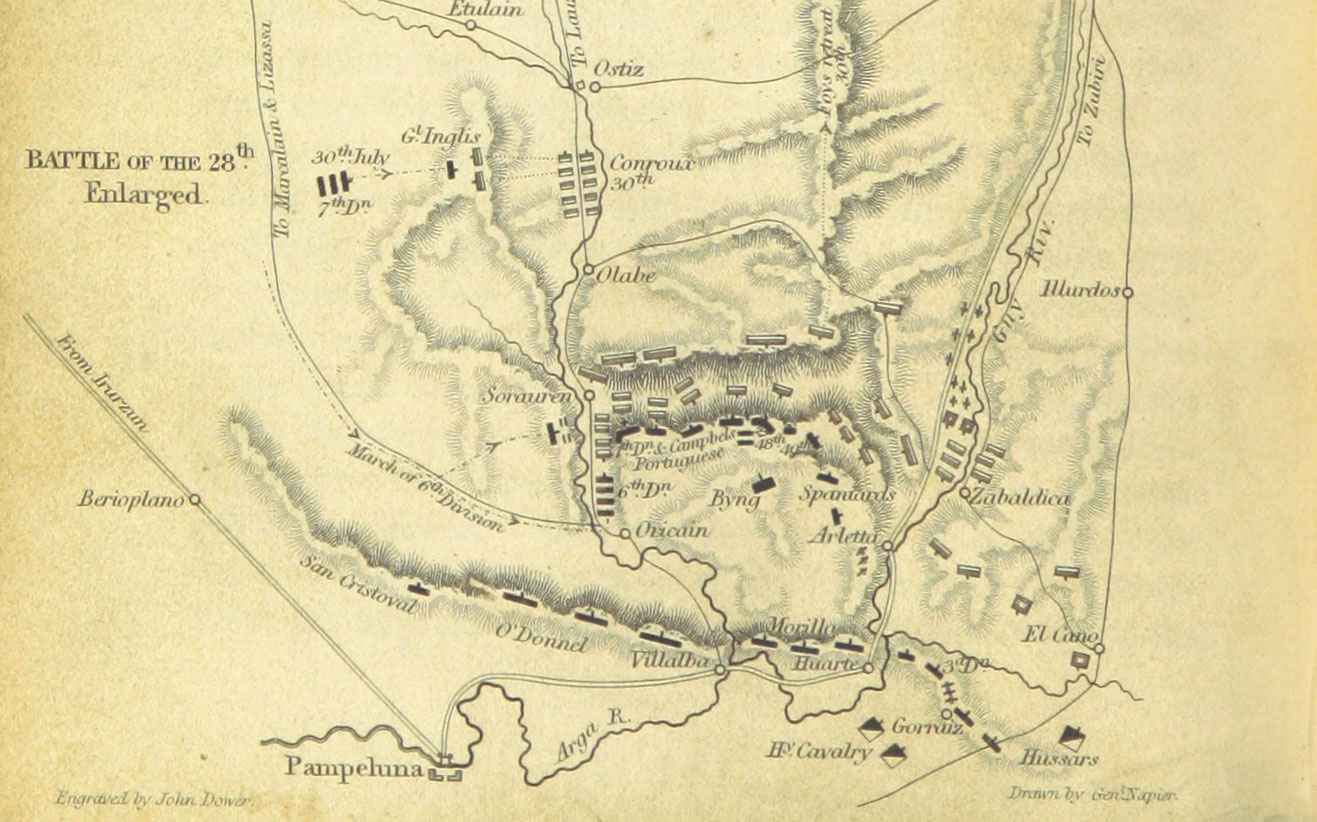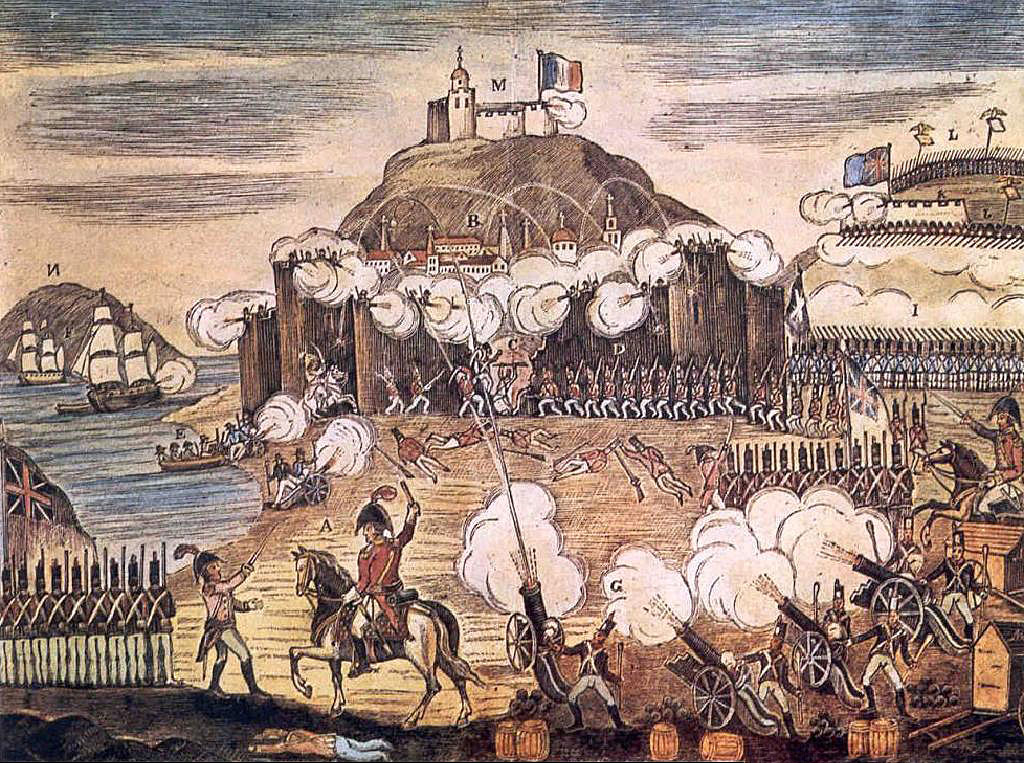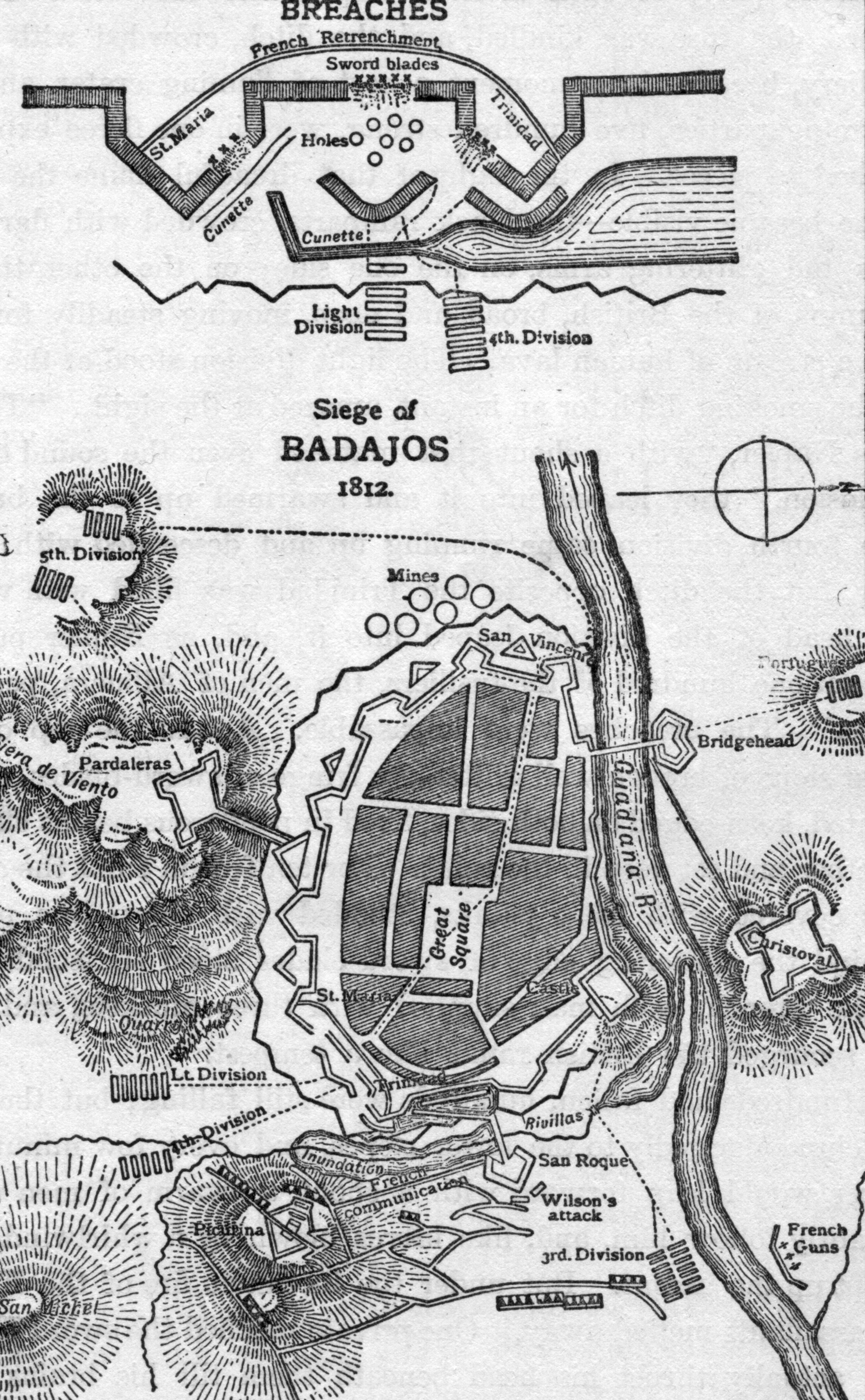|
British–Portuguese Army
The Anglo-Portuguese Army was the combined British and Portuguese army that participated in the Peninsular War, under the command of Arthur Wellesley. The Army is also referred to as the British-Portuguese Army and, in Portuguese, as the ''Exército Anglo-Luso'' or the ''Exército Anglo-Português''. The Anglo-Portuguese Army was established with the British Army deployed to the Iberian Peninsula under the command of General Arthur Wellesley, and the Portuguese Army rebuilt under the leadership of British General William Beresford and the Portuguese War Secretary Miguel Pereira Forjaz. The new Portuguese battalions were supplied with British equipment, trained to British standards and thoroughly re-organised. Incompetent or corrupt officers were cashiered and appropriate replacements were appointed or promoted from amongst promising Non-commissioned officers. On 22 April 1809, Wellesley became Commander-in-Chief of the British Army in the Peninsula, replacing General Cradoc ... [...More Info...] [...Related Items...] OR: [Wikipedia] [Google] [Baidu] |
George III Of The United Kingdom
George III (George William Frederick; 4 June 173829 January 1820) was King of Great Britain and of Monarchy of Ireland, Ireland from 25 October 1760 until Acts of Union 1800, the union of the two kingdoms on 1 January 1801, after which he was King of the United Kingdom of Great Britain and Ireland until his death in 1820. He was the longest-lived and longest-reigning king in British history. He was concurrently Duke and Prince-elector of Electorate of Brunswick-Lüneburg, Brunswick-Lüneburg ("Hanover") in the Holy Roman Empire before becoming King of Hanover on 12 October 1814. He was a monarch of the House of Hanover but, unlike his two predecessors, he was born in Great Britain, spoke English as his first language and never visited Hanover. George's life and reign were marked by a series of military conflicts involving his kingdoms, much of the rest of Europe, and places farther afield in Africa, the Americas and Asia. Early in his reign, Great Britain defeated France in th ... [...More Info...] [...Related Items...] OR: [Wikipedia] [Google] [Baidu] |
Battle Of Fuentes De Oñoro
In the Battle of Fuentes de Oñoro (3–5 May 1811), the British–Portuguese Army under Wellington checked an attempt by the French Army of Portugal under Marshal André Masséna to relieve the besieged city of Almeida. A bloody stalemate was not the sort of battle that had been expected to follow André Masséna's expulsion from Portugal. His confidence and moral authority having been much boosted by Torres Vedras, the spring of 1811 found Wellington intending to move over to the offensive, for which policy he had received de facto authorisation from his political masters in London, where talks of major reductions in the size of the army employed in Portugal had been replaced by promises of major reinforcements. Supply difficulties, sickness amongst the troops and want of siege artillery ensured that in the short term no great strokes of strategy could be envisaged, but it was hoped that Almeida, Ciudad Rodrigo and Badajoz might be all recaptured, thereby opening the wa ... [...More Info...] [...Related Items...] OR: [Wikipedia] [Google] [Baidu] |
Battle Of Sorauren
The Battle of Sorauren was part of a series of engagements in late July 1813 called the Battle of the Pyrenees in which a combined British and Portuguese force under Sir Arthur Wellesley held off Marshal Soult's French forces attempting to relieve Pamplona. Prelude With sizable Anglo-Portuguese forces tied up in assaulting San Sebastián and besieging Pamplona, the new French commander Marshal Soult launched a counterattack with the ''Armée d'Espagne'' through Maya and Roncesvalles. Although the French initially enjoyed local superiority, the tough terrain combined with stubborn British and Portuguese resistance slowed the French advance to a crawl. Battle The main French column of about 40,000 men under Clausel and Reille marched to attack Sorauren. On the 27July the heavily outnumbered British forces there were drawn up on the Oricain Ridge. Wellesley made a dramatic ride along the ridge in front of the cheering British and Portuguese troops and Soult postponed the ... [...More Info...] [...Related Items...] OR: [Wikipedia] [Google] [Baidu] |
Battle Of The Pyrenees
The Battle of the Pyrenees was a large-scale offensive (the author David Chandler recognises the 'battle' as an offensive) launched on 25 July 1813 by Marshal Nicolas Jean de Dieu Soult from the Pyrénées region on Emperor Napoleon’s order, in the hope of relieving French garrisons under siege at Pamplona and San Sebastián. After initial success the offensive ground to a halt in the face of increased allied resistance under the command of Arthur Wellesley, Marquess of Wellington. Soult abandoned the offensive on 30 July and headed toward France, having failed to relieve either garrison. The Battle of the Pyrenees involved several distinct actions. On 25 July, Soult and two French corps fought the reinforced British 4th Division and a Spanish division at the Battle of Roncesvalles. The Allied force successfully held off all attacks during the day, but retreated from the Roncesvalles Pass that night in the face of overwhelming French numerical superiority. Also on the 25 ... [...More Info...] [...Related Items...] OR: [Wikipedia] [Google] [Baidu] |
Battle Of Roncesvalles (1813)
The Battle of Roncesvalles (french: Roncevaux) (25 July 1813) was a battle between French and Anglo-Portuguese forces during the Peninsular War (1808–1814). Background After the decisive victory of Allied forces under Arthur Wellesley, 1st Duke of Wellington over French forces under King Joseph Bonaparte at the Battle of Vitoria, Wellington advanced to capture San Sebastián and Pamplona, the last French outposts on Spanish soil. While Wellington concentrated his efforts on capturing the strategically important port of San Sebastián, he sent 11,000 men under the Irish-Spanish General O'Donnell to blockade Pamplona. To prevent a French counter-attack over the Pyrenees Wellington positioned General Hill's Corps over a front, to cover the coastal road and the main passes over the mountains. Battle Having rapidly rebuilt and reorganised his forces after their defeat, the French under Marshal Nicolas Jean de Dieu Soult launched an attack towards Pamplona through the pass ... [...More Info...] [...Related Items...] OR: [Wikipedia] [Google] [Baidu] |
Siege Of San Sebastián
In the siege of San Sebastián (7 July – 8 September 1813), part of the Peninsular War, Allied forces under the command of Arthur Wellesley, Marquess of Wellington failed to capture the city in a siege. However in a second siege the Allied forces under Thomas Graham captured the city of San Sebastián in northern Basque Country from its French garrison under Louis Emmanuel Rey. During the final assault, the British and Portuguese troops rampaged through the town and razed it to the ground. Situation After winning the decisive Battle of Vitoria on 21 June 1813, Wellington's army advanced into the western Pyrenees to take the mountain passes and to face Marshal Soult's who had retreated back to France to try to reorganise his army. To clear his rear area, and to evict the last French forces from Spain, Wellington needed to take Pamplona and San Sebastián. Lacking resources to attack both simultaneously, Pamplona was blockaded and San Sebastián was put under siege. The b ... [...More Info...] [...Related Items...] OR: [Wikipedia] [Google] [Baidu] |
Battle Of Vitoria
At the Battle of Vitoria (21 June 1813) a British, Portuguese and Spanish army under the Marquess of Wellington broke the French army under King Joseph Bonaparte and Marshal Jean-Baptiste Jourdan near Vitoria in Spain, eventually leading to victory in the Peninsular War. Background In July 1812, after the Battle of Salamanca, the French had evacuated Madrid, which Wellington's army entered on 12 August 1812. Deploying three divisions to guard its southern approaches, Wellington marched north with the rest of his army to lay siege to the fortress of Burgos, away, but he had miscalculated the enemy's strength, and on 21 October he had to abandon the Siege of Burgos and retreat. By 31 October he had abandoned Madrid too and retreated first to Salamanca then to Ciudad Rodrigo, near the Portuguese frontier, to avoid encirclement by French armies from the north-east and south-east. Wellington spent the winter reorganizing and reinforcing his forces to attack King Joseph in Madr ... [...More Info...] [...Related Items...] OR: [Wikipedia] [Google] [Baidu] |
Siege Of Burgos
At the siege of Burgos, from 19 September to 21 October 1812, the Anglo-Portuguese Army led by General Arthur Wellesley, Marquess of Wellington tried to capture the castle of Burgos from its French garrison under the command of General of Brigade Jean-Louis Dubreton. The French repulsed every attempt to seize the fortress, resulting in Wellington's withdrawal. The siege took place during the Peninsular War, part of the Napoleonic Wars. Burgos is located about north of Madrid. After having soundly defeated Marshal Auguste Marmont's French army at the Battle of Salamanca in July 1812, Wellington exploited his great victory by advancing on Madrid. King Joseph Bonaparte and Marshal Jean-Baptiste Jourdan retreated to Valencia where they sought refuge with Marshal Louis Gabriel Suchet. The magnitude of Wellington's triumph also compelled Marshal Nicolas Soult to evacuate Andalucia in the south and withdraw to Valencia. The combined armies of Soult and Joseph soon posed a serio ... [...More Info...] [...Related Items...] OR: [Wikipedia] [Google] [Baidu] |
Battle Of Majadahonda
The Battle of Majadahonda (11 August 1812) saw an Imperial French cavalry division led by Anne-François-Charles Trelliard attack two brigades of cavalry under Benjamin d'Urban and forming the advance guard of Arthur Wellesley, Earl of Wellington's army. Trelliard's leading brigade routed d'Urban's Portuguese horsemen and overran three British cannons. King's German Legion (KGL) cavalry led by Eberhardt Otto George von Bock intervened to halt the Imperial French horsemen, but were finally compelled to withdraw when Trelliard committed his second and third brigades to the contest. The Imperial French cavalry was unable to cope with a KGL infantry battalion defending a village and they withdrew at the approach of additional British cavalry and infantry. This Peninsular War action was fought near Majadahonda, which is located northwest of Madrid. Battle After General Arthur Wellesley, 1st Duke of Wellington's great victory at the Battle of Salamanca, the Anglo-Portuguese Ar ... [...More Info...] [...Related Items...] OR: [Wikipedia] [Google] [Baidu] |
Battle Of Salamanca
The Battle of Salamanca (in French and Spanish known as the Battle of Arapiles) on 22July 1812 was a battle in which an Anglo-Portuguese army under the Earl of Wellington defeated Marshal Auguste Marmont's French forces at Arapiles, south of Salamanca, Spain, during the Peninsular War. A Spanish division was also present but took no part in the battle. The battle involved a succession of flanking manoeuvres in oblique order, initiated by the British heavy cavalry brigade and Pakenham's 3rd Division and continued by the cavalry and the 4th, 5th and 6th divisions. These attacks resulted in a rout of the French left wing. Marmont and his deputy commander, General Bonet, received shrapnel wounds in the first few minutes of firing. Confusion amongst the French command may have been decisive in creating an opportunity, which Wellington seized. General Bertrand Clauzel, third in seniority, assumed command and ordered a counter-attack by the French reserve toward the deplete ... [...More Info...] [...Related Items...] OR: [Wikipedia] [Google] [Baidu] |
Battle Of Almaraz
The Battle of Almaraz was a battle of the Peninsular War which took place on 18–19 May 1812, in which the Anglo-Portuguese Army under Lord Hill destroyed a French pontoon bridge across the River Tagus, in Almaraz, Spain. The bridge was protected by two French garrisons at either end. The action was swift-moving, deceptive, and daring. The decisive result produced a substantial improvement in the Allied position by keeping French forces separated ahead of the imminent Battle of Salamanca. Background By late April 1812, the Duke of Wellington had successfully captured the strategic border fortresses of Badajoz and Ciudad Rodrigo, commanding the two major routes between Spain and Portugal. He now prepared to advance into Spain with the largest army he had commanded to date, which was strong enough to take on any French army. There were two French armies in Spain, however: Marmont's Army of Portugal, garrisoned near Salamanca, and Soult's Army of the South. The Tagus Riv ... [...More Info...] [...Related Items...] OR: [Wikipedia] [Google] [Baidu] |
Siege Of Badajoz (1812)
In the siege of Badajoz (16 March – 6 April 1812), also called the third siege of Badajoz, an Anglo-Portuguese Army under the Earl of Wellington (later the Duke of Wellington) besieged Badajoz, Spain, and forced the surrender of the French garrison. The siege was one of the bloodiest in the Napoleonic Wars and was considered a costly victory by the British, with some 4,800 Allied soldiers killed or wounded in a few short hours of intense fighting during the storming of the breaches as the siege drew to an end. Enraged at the huge number of casualties they suffered in seizing the city, the troops broke into houses and stores consuming vast quantities of alcohol with many of them then going on a rampage, threatening their officers and ignoring their commands to desist, and even killing several. It took three days before the men were brought back into order. When order was restored, an estimated 200-300 civilians had been killed or injured. Background The allied campaign ... [...More Info...] [...Related Items...] OR: [Wikipedia] [Google] [Baidu] |
.jpg)





